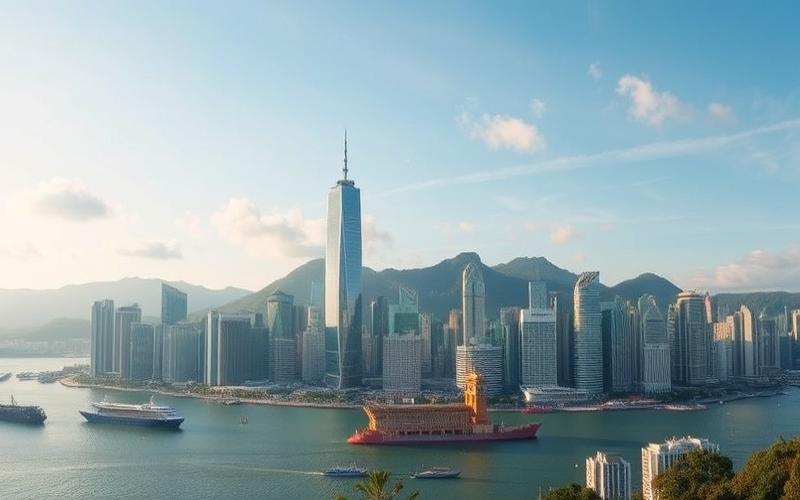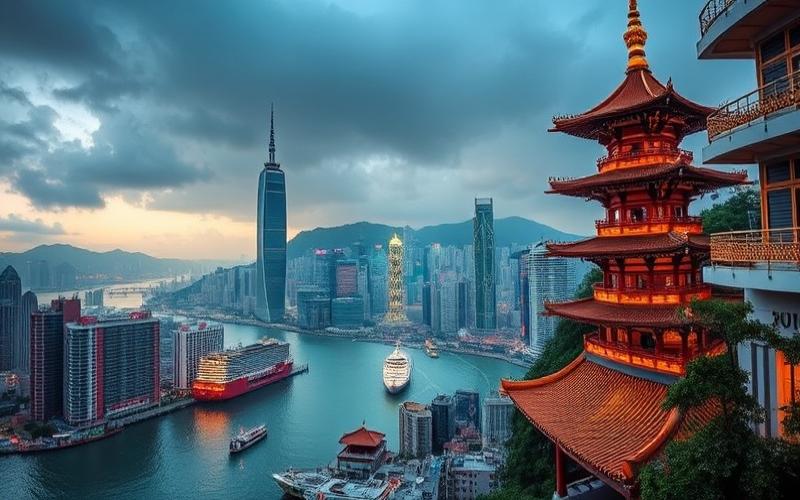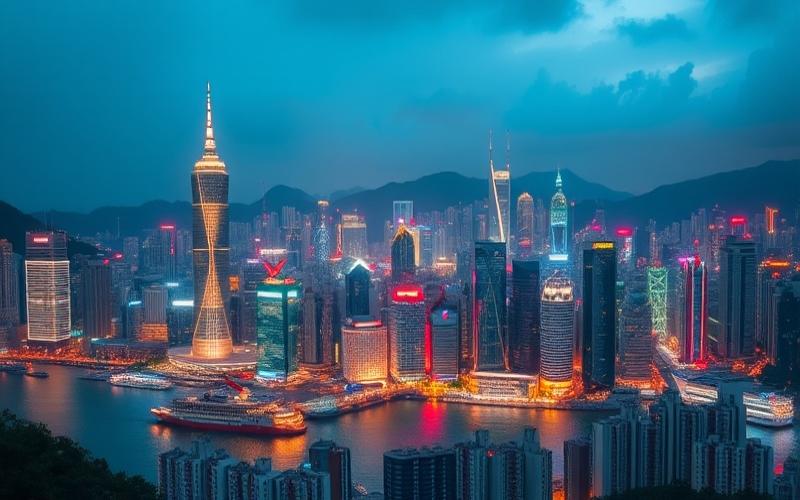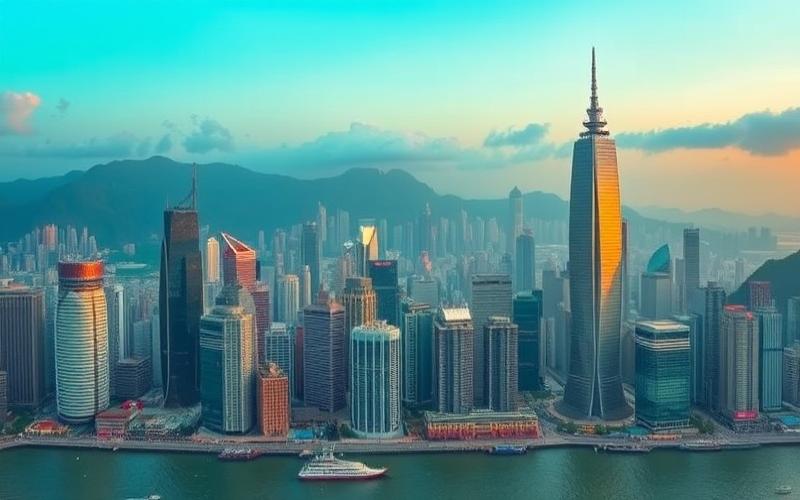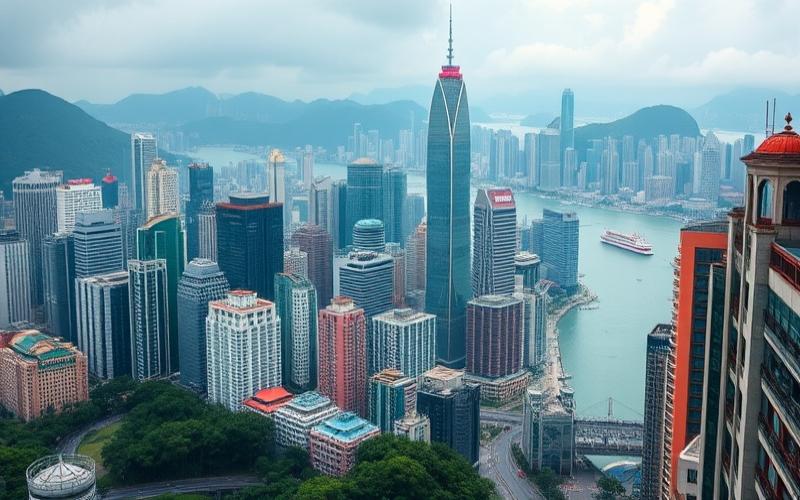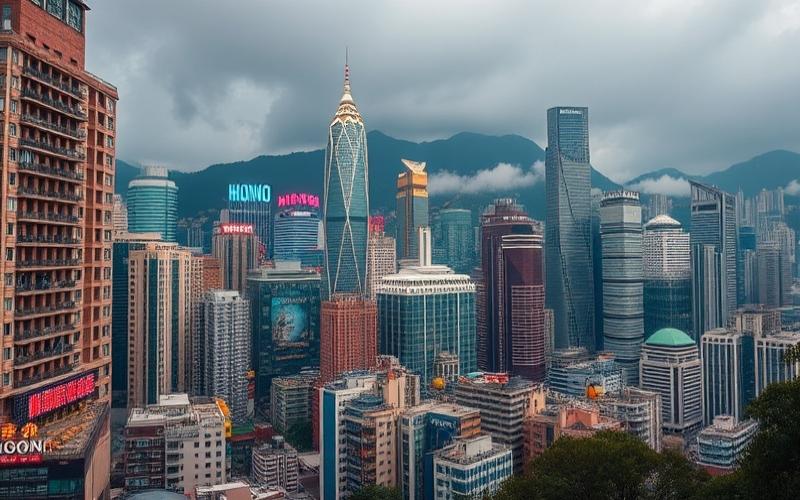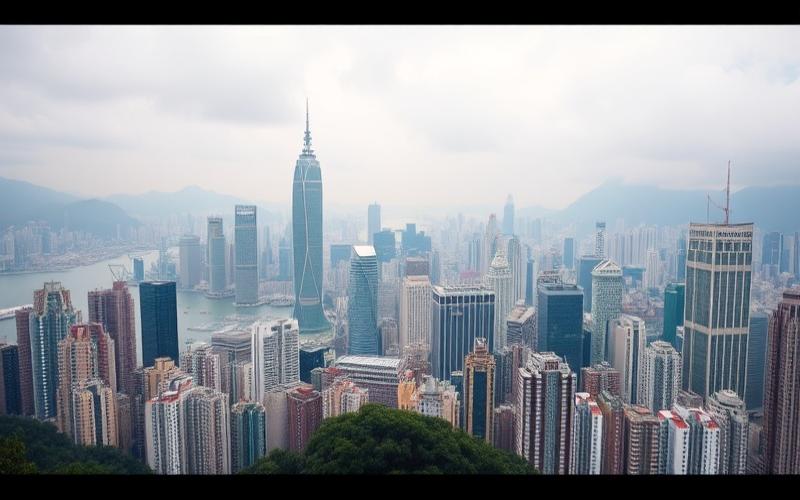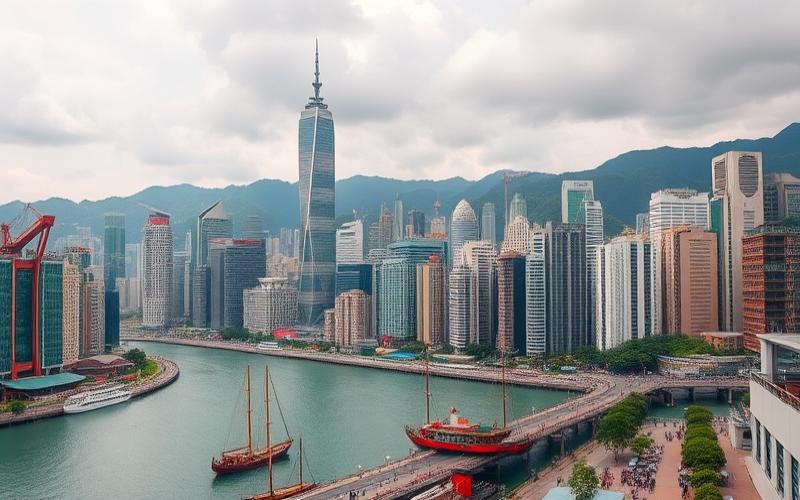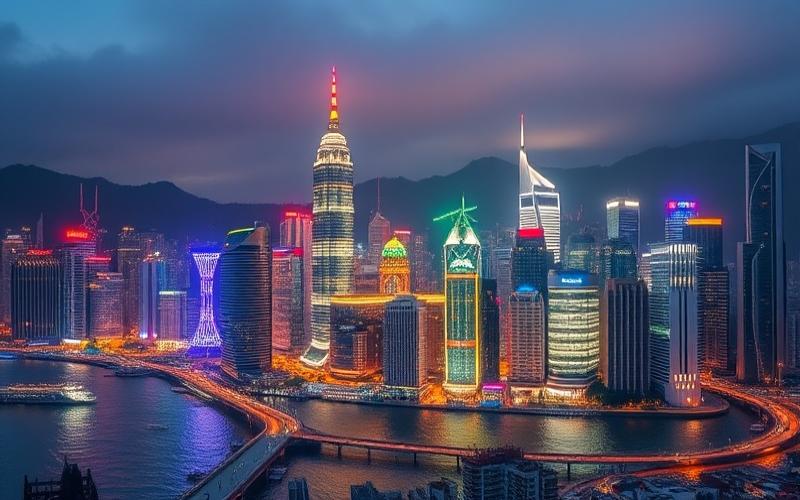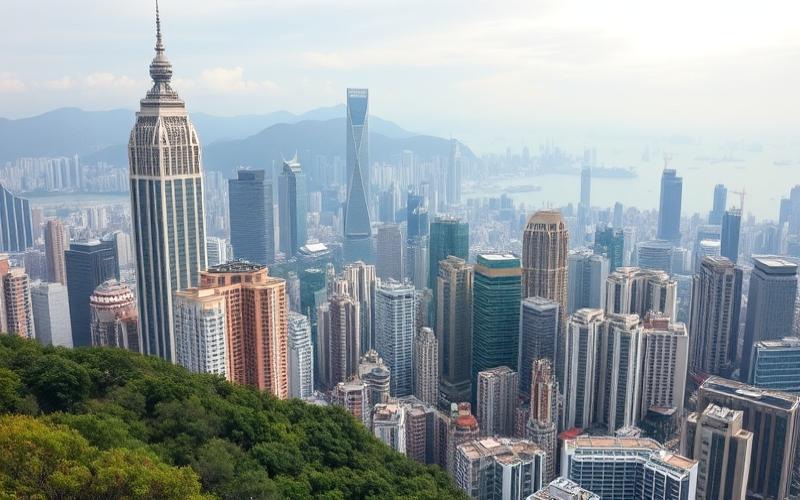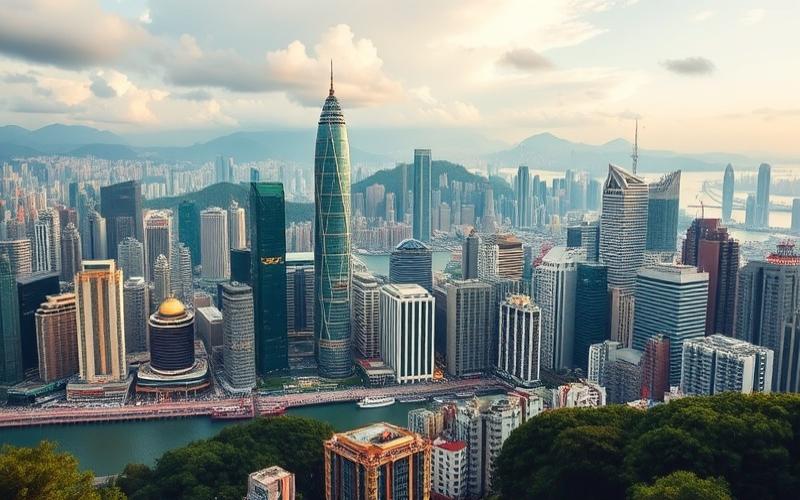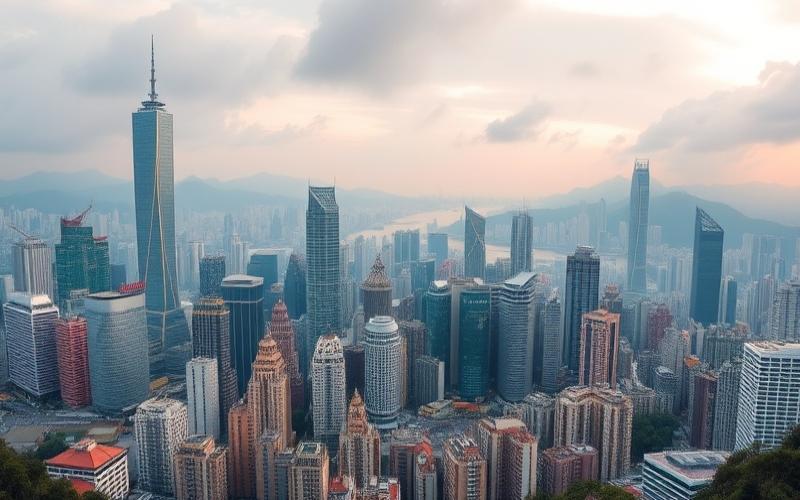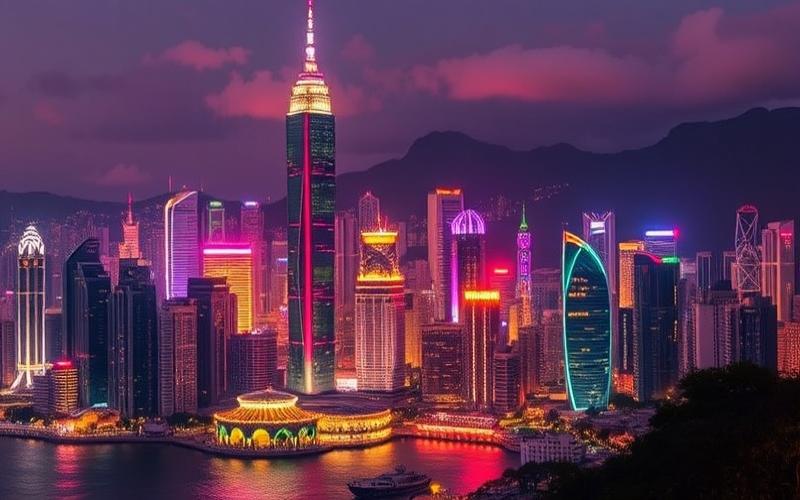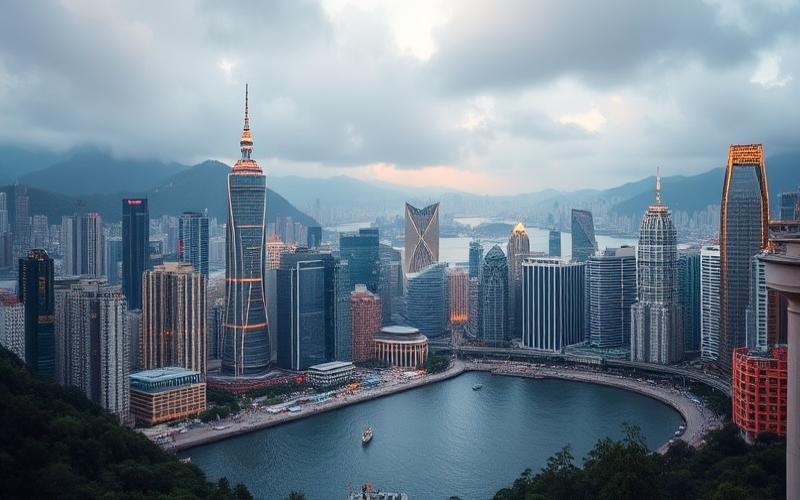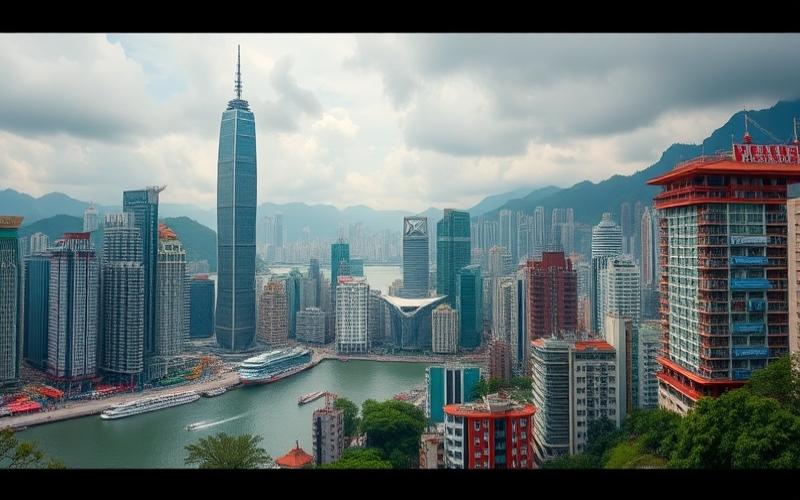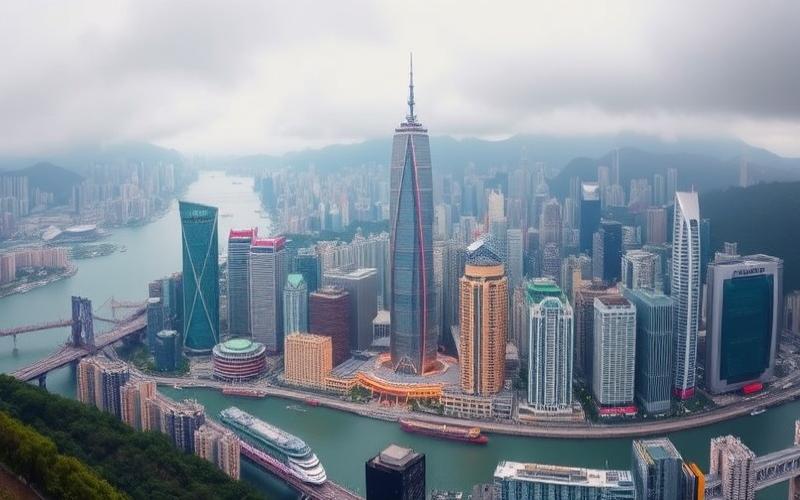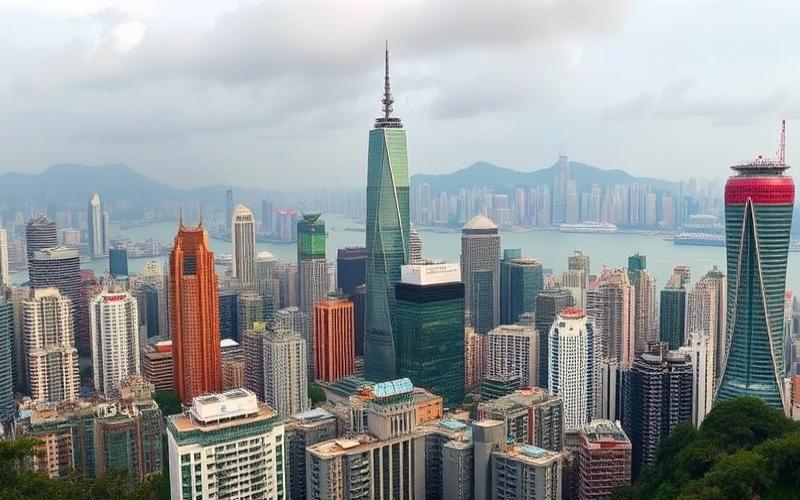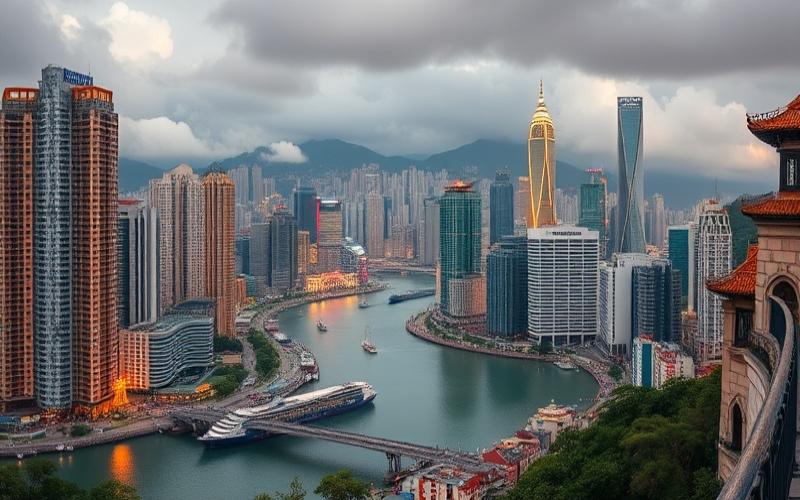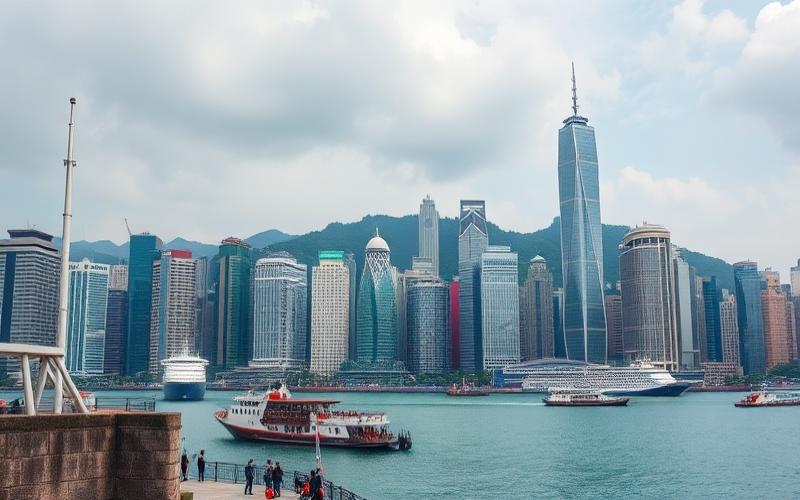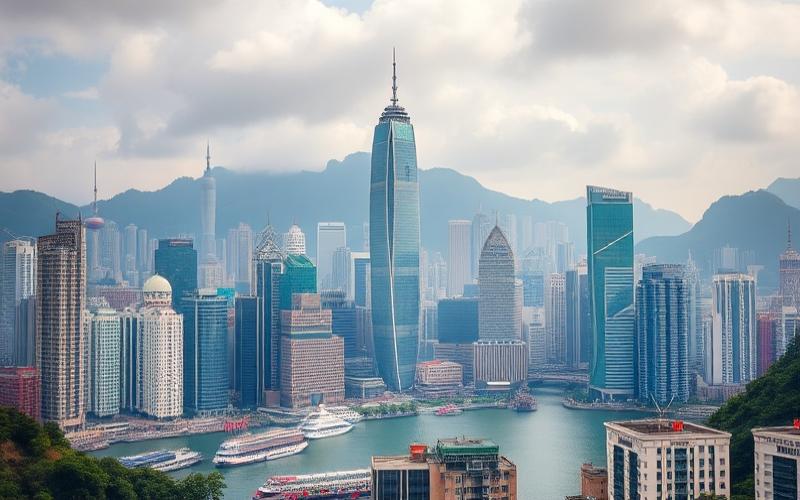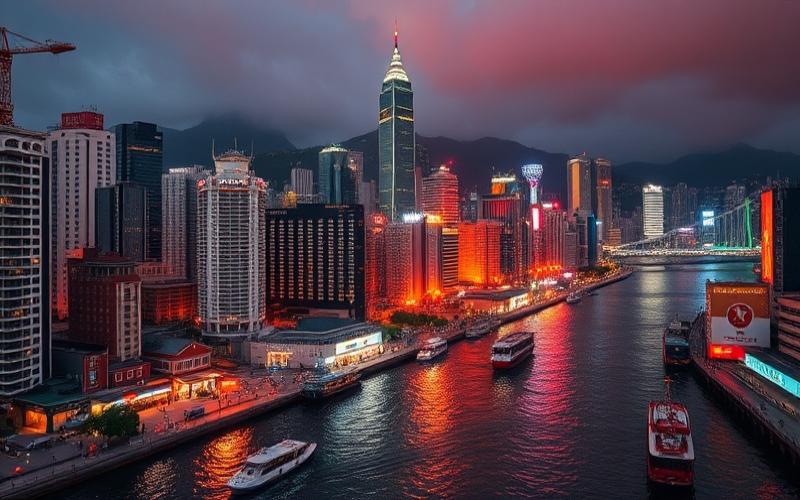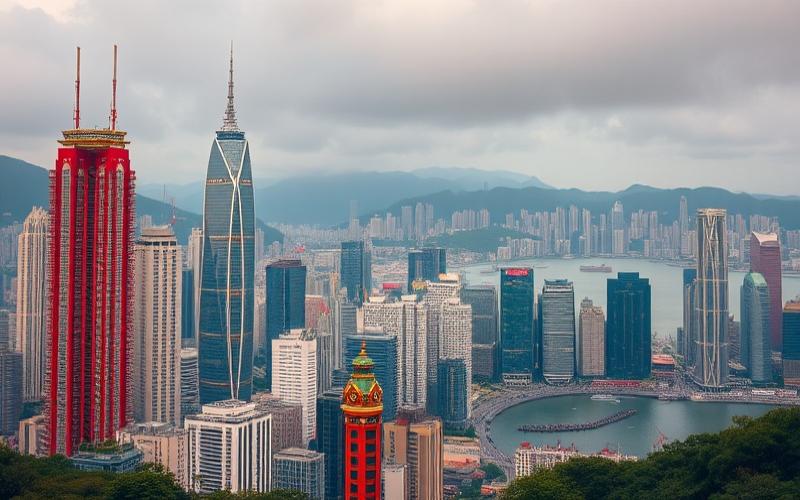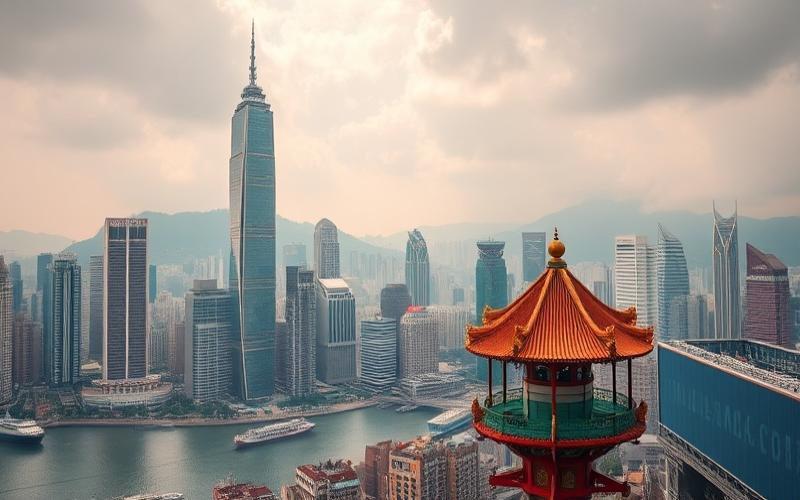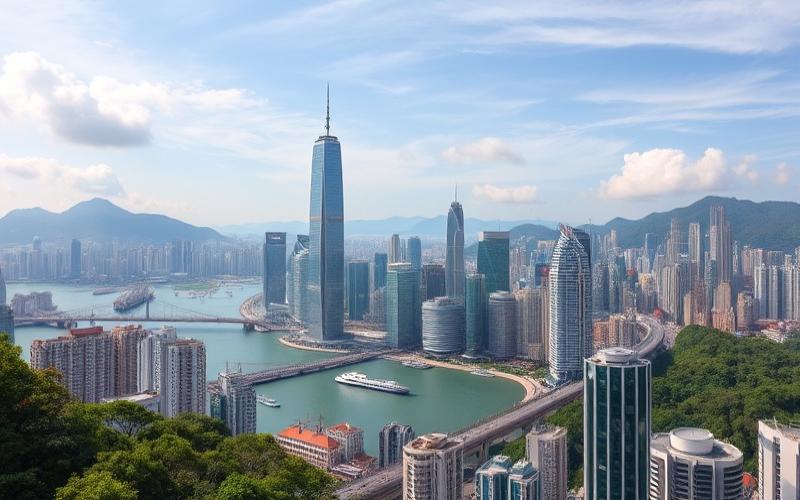
 Published on and written by Cyril Jarnias
Published on and written by Cyril Jarnias
The Rise of Tourism in Hong Kong and Its Impact on Real Estate
Hong Kong, a popular destination for its unique blend of modernity and tradition, is experiencing remarkable tourism growth. This influx of visitors has significant repercussions on the local real estate market.
With millions of visitors arriving each year, the demand for short-term accommodations and hotel complexes has expanded rapidly. This situation exerts notable pressure on residential property prices.
Simultaneously, previously underdeveloped neighborhoods have seen their land values increase, transforming the urban landscape and redrawing the housing map.
The Challenges of Real Estate Development
This dynamic raises crucial questions around:
- The sustainability of the real estate market
- Housing affordability
- The balance between economic development and quality of life preservation
These issues are particularly sensitive in a city already grappling with social and economic tensions.
Good to Know:
The impact of tourism on real estate is often underestimated, yet it represents a key factor in the evolution of urban markets.
An Insightful Analysis
By exploring the profound and often underestimated impact of tourism on the real estate sector, this article provides an analysis that connects economic growth with Hong Kong’s real estate challenges.
Hong Kong’s Major Tourist Sites and Their Real Estate Influence
Main Tourist Attractions in Hong Kong
- Victoria Peak: The highest point on the island, offering panoramic views of the city and harbor. It’s an iconic destination for visitors, with trails, restaurants, and access via the famous Peak Tram.
- Hong Kong Disneyland: A family-friendly amusement park located on Lantau Island, very popular with international and local tourists.
- Tsim Sha Tsui: A vibrant neighborhood in southern Kowloon, known for its luxury hotels, shopping centers (Harbour City), bayfront promenade, and proximity to museums.
Other notable sites:
- Tian Tan Buddha (Big Buddha)
- Po Lin Monastery
- Mong Kok
- Star Ferry
Tourism’s Impact on Real Estate Appeal
High tourist traffic in these areas strongly stimulates appeal for real estate investment. This dynamic is explained by:
Increased Demand for Hotel and Residential Accommodations
- Massive development of high-end hotels in Tsim Sha Tsui to meet seasonal demand.
- Proliferation of short-term rental apartments around Victoria Peak and Disneyland.
Accelerated Land Value Appreciation
Tourist neighborhoods see their property prices rise faster than the urban average.
| Area | Average Price per m² 2018 | Average Price per m² 2024 | Change (%) |
| Tsim Sha Tsui | 31,000 HKD | 42,500 HKD | +37% |
| Victoria Peak | 51,000 HKD | 68,000 HKD | +33% |
| Lantau/Disneyland | ~23,000 HKD | ~29,800 HKD | +29% |
Concrete Examples of Recent Tourism-Influenced Projects
- The Peninsula Extension (Tsim Sha Tsui): Expansion of the legendary Peninsula Hotel including ultra-luxury private residences integrated into the existing complex. Project motivated by record-high tourist occupancy rates after post-pandemic reopening.
- Mount Nicholson Residences (Victoria Peak): Premium residential complex launched following the growing influx of affluent tourists wanting to invest or stay long-term near the summit.
Influence of Tourist Infrastructure & Accessibility
The constant modernization of infrastructure not only improves the tourist experience but also real estate potential:
Key factors list:
- Enhanced accessibility thanks to the MTR Airport Express connecting Disneyland/Lantau to major urban centers in under thirty minutes
- Continuous improvement of roadways to Victoria Peak facilitating daily traffic flow
- Massive public investments in scenic pedestrian promenades at Tsim Sha Tsui
These developments make neighborhoods attractive to both investors and wealthy residents or expatriates seeking urban comfort combined with a lively environment.
Sustained tourist demand acts as a major catalyst on the local real estate market, leading to continuous price increases and a multiplication of high-end real estate projects around major iconic sites.
Good to Know:
In Hong Kong, major tourist spots like Victoria Peak, Hong Kong Disneyland, and the Tsim Sha Tsui district play a crucial role in real estate market appeal. For example, the constant flow of visitors to Victoria Peak has stimulated the development of residential and commercial projects around it, causing property prices to rise by nearly 25% over the past five years. Hong Kong Disneyland, with its millions of annual visitors, attracts investments in hotel complexes and luxury residences. The vibrancy of Tsim Sha Tsui, enhanced by accessibility through modern infrastructure like the express train to mainland China, has led to significant increases in property prices, with luxury apartments selling for more than 50% above the Hong Kong average. Tourist sites thus not only boost investments but also improve local infrastructure, creating a virtuous cycle for real estate.
Soaring Prices Against a Tourism Backdrop
The rise of tourism in Hong Kong has contributed to a notable increase in real estate demand, particularly in major tourist districts such as Tsim Sha Tsui, Central, and Causeway Bay. The massive influx of visitors, especially from mainland China, stimulates the short-term rental market (hotels, serviced apartments, seasonal rentals), encouraging local and foreign investors to acquire properties to meet temporary accommodation needs.
| District | Recent Property Price Trend | Tourism-Related Feature |
|---|---|---|
| Tsim Sha Tsui | Marked increase until 2022 | Major hotel and commercial hub |
| Central | Historically very high prices | Proximity to offices/business tourism |
| Causeway Bay | Stability then slight correction | Shopping and tourist crowds |
Pre-pandemic statistics showed that prices in these sectors had increased by up to +20% over five years before 2020. However, since 2023-2024, a slowdown or correction has been observed: according to the latest available data, the overall residential price index has fallen to its lowest level in several years. This recent decline is explained by the unfavorable global economic context and rising mortgage interest rates.
Foreign investors – primarily from mainland China but also other Asian countries – have long represented a key driver of Hong Kong’s real estate market. Attracted by the high rental potential induced by constant tourist traffic, they have massively acquired new or existing homes in strategic areas. This foreign speculation has amplified the price surge to the detriment of affordability for local residents.
Major Socio-Economic Consequences
- Growing difficulties in accessing homeownership: Hong Kong remains one of the cities with the most unfavorable property price to median income ratios in the world.
- Significant increase in rental costs in certain central areas or near tourist attractions.
- Partial exodus of families to urban outskirts or moves abroad due to financial inability to secure decent housing.
- Increased pressure on certain public services (saturated urban transport around tourist hubs).
Addressing Market Tensions
Hong Kong had implemented several deterrent taxes as early as 2012 specifically targeting:
- Non-resident buyers
- Multiple acquisitions (secondary residence)
These measures primarily aimed to curb international speculation exacerbated by tourism. However, in February 2024, observing a clear slowdown in the real estate market (continuous decline since mid-2023), the Hong Kong government removed these three major taxes to stimulate local real estate activity.
Boxed Summary:
⬛️ The prolonged impact of tourism structurally contributes to maintaining upward pressure on property values in certain iconic districts; however, the current economic climate is causing a relative calm after several years of record inflation. Public policies now oscillate between opening to foreign capital to revive the sector… and past attempts – currently suspended – to limit this speculative dynamic that persistently weakens access to affordable housing for many local residents ⬛️
Good to Know:
In Hong Kong, the constant influx of tourists stimulates real estate demand, leading to soaring prices particularly marked in popular districts like Tsim Sha Tsui and Central, where rates climbed 15% over the past year. Foreign investors, attracted by increased rental potential, amplify this phenomenon by investing heavily in high-yield properties. This dynamic complicates housing access for residents, exacerbating socio-economic inequalities. In response, the Hong Kong government implemented taxes on real estate transactions for foreigners and intensified public housing construction in an attempt to stabilize this volatile market.
The Rise of Rental Investment in Hong Kong
Rental investment in Hong Kong is experiencing an evolution marked by trend adjustments in response to recent economic and tourism dynamics. After a period of slowdown linked to the pandemic, the tourism recovery has stimulated rental demand, particularly for properties suited to short and medium stays, positively influencing occupancy rates in certain strategic neighborhoods.
Recent Rental Investment Trends:
- Residential rents overall declined in the first quarter of 2025 due to abundant supply and moderate demand, except for the luxury segment where rents continue to rise.
- Investors are adopting a wait-and-see approach amid macroeconomic uncertainties (international interest rates, trade policy), but the residential sector remains attractive in the medium term thanks to the gradual return of expatriates and tourists.
- Short-term rentals (serviced apartments type) particularly benefit from the post-Covid tourist influx and the dynamism of emerging financial sectors (crypto players coming from mainland China).
Neighborhoods Favored by Rental Activity:
| Neighborhood | Type of Clientele | Recent Trend |
|---|---|---|
| The Peak / Mid-Levels | High-income expatriates | Sustained luxury demand |
| Kowloon (Tsim Sha Tsui) | Tourists & crypto traders | Rent growth +3.9% |
| Central/Admiralty | Finance professionals | Flexible supply sought |
| Wan Chai | Business/tourism stays | High occupancy |
Popular Property Types:
- High-end apartments intended for expatriates or senior executives.
- Serviced apartments/small furnished units, prized for their flexibility by mobile professionals and long-term tourists.
- Spacious family homes in historic residential neighborhoods.
Note: Well-furnished properties rent faster and reduce vacancy rates.
Tourism’s Impact on Occupancy & Yield:
Increased tourist flow favors high occupancy rates in central neighborhoods and those near major attractions or commercial hubs.
In 2025, certain areas like Kowloon show quarterly rent increases (+3.9%) while Hong Kong Island sees values stagnate or slightly decline (-0.2%), indicating a partial shift in demand toward Kowloon.
Observed Gross Yields:
| Type | Average Gross Yield (%) in 2025 |
|---|---|
| Luxury | 2.8 – 4 |
| Mid-range/serviced apt. | 4 – 6 |
Yields remain competitive despite the overall correction in property prices.
Tax & Legislative Advantages:
No capital gains tax on property resale.
Flat-rate taxation on rental income limited compared to several other Asian hubs.
- Stable tax regime; no additional specific taxation for standard tourist rentals
- Transparent legal process facilitating acquisition/resale
- No major restrictions on foreign ownership
Recent Illustrative Statistics:
- Average annual increase in “luxury” rents: +1% (Q1/Q1)
- Quarterly growth in Kowloon premium segment: +3.9%
- Downtown serviced apartments occupancy regularly exceeding 85%
Future Outlook:
The favorable expected evolution of the tourism sector suggests:
- Maintenance or even strengthening of occupancy rates in attractive areas
- Growing interest in flexible housing adapted to temporary stays
- Gradual stabilization then possible slow rise in net yields once excess supply is absorbed
The Hong Kong market thus retains its structural appeal for rental investment thanks to its resilience to external shocks, advantageous taxation, and unique ability to capture both international and regional tourism.
Good to Know:
The rise of rental investment in Hong Kong is strongly linked to the increase in tourism in recent years, stimulating interest in neighborhoods like Central, Tsim Sha Tsui, and Wan Chai, where demand for short stays is high. Medium-sized apartments and luxury residences record the best occupancy rates, supported by constant tourist traffic, which boosts rental yields, sometimes exceeding 4%. Benefiting from favorable legislation and attractive tax incentives, such as exemption from certain stamp duties for rental investments, foreign investors continue to flock. In 2022, a 20% increase in the number of rental investments was noted, and with the forecast of continued tourism growth, the market is expected to experience positive momentum, further strengthening its profitability.
Disclaimer: The information provided on this website is for informational purposes only and does not constitute financial, legal, or professional advice. We encourage you to consult qualified experts before making any investment, real estate, or expatriation decisions. Although we strive to maintain up-to-date and accurate information, we do not guarantee the completeness, accuracy, or timeliness of the proposed content. As investment and expatriation involve risks, we disclaim any liability for potential losses or damages arising from the use of this site. Your use of this site confirms your acceptance of these terms and your understanding of the associated risks.

